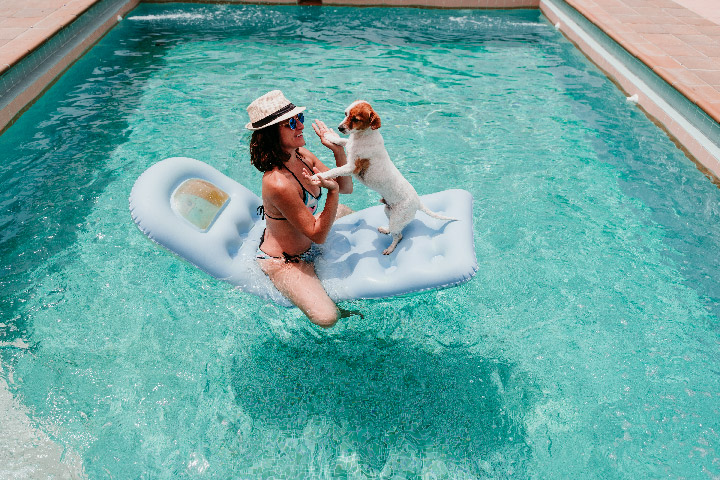
Diving Deep into Winterizing: Tailoring Your Tactics to Your Pool Surface
Winter is coming, and pool owners everywhere are looking to batten down the hatches to ensure their beloved oasis remains in top shape for the next swimming season. But did you know that the type of surface your pool has can influence how you should winterize? Here’s a dive deep into the diverse world of pool surfaces and the best ways to winterize each one.
1. Plaster Pools (Gunite or Concrete):
- Overview: Plaster pools are classic and durable, providing a smooth surface. However, they are more pH reactive, meaning they can become acidic or alkaline relatively quickly.
- Winterizing Tips:
- Balance your pool chemicals, especially ensuring your pH is within the 7.2-7.6 range.
- Brush the pool’s surface regularly before covering it. This prevents algae growth and minimizes staining.
- A solid pool cover is often recommended to prevent debris from staining the surface.
2. Vinyl Liner Pools:
- Overview: Vinyl pools offer a non-abrasive, smooth surface. However, they can be punctured or torn.
- Winterizing Tips:
- Avoid lowering the water level too much, as the weight of the water holds the liner in place.
- Use air pillows under the cover to balance the weight of snow or rainwater, which can prevent the liner from stretching or tearing.
- Inspect your liner for any signs of wear or damage before winter and address them to prevent worsening.
3. Fiberglass Pools:
- Overview: These pools are essentially giant shells placed into the ground. They are low maintenance and resist algae growth.
- Winterizing Tips:
- Fiberglass pools require fewer adjustments in pH and alkalinity, but always ensure they’re balanced before winter.
- Because of their algae resistance, using an algaecide might not be as crucial, but it’s still a good precaution.
- Regularly clean and inspect the gel coat surface.
4. Pebble-Tec or Stone Surfaces:
- Overview: Often found in luxury pools, these surfaces have a beautiful, natural finish but can become rough over time.
- Winterizing Tips:
- Pay special attention to calcium levels. High calcium can cause scaling on the surface.
- Like plaster pools, brushing is essential to prevent algae and maintain the texture.
- A mesh pool cover allows rainwater to pass through, reducing the chance of surface staining from standing water.
5. Tiled Pools:
- Overview: Tile provides a stunning, durable, and smooth surface but can be susceptible to frost damage in freezing temperatures.
- Winterizing Tips:
- Check and repair any loose or damaged tiles before the cold sets in.
- Ensure proper water chemistry to prevent scale buildup on tiles.
- Opt for a solid cover to minimize water, snow, and ice contact with the tiles.
Conclusion: Every pool is unique, and understanding its specific needs based on its surface type is vital. Winterizing your pool properly ensures you’re set for a smoother, easier pool opening when warm weather returns. So, know your pool’s surface, take the right steps, and dive into winter with confidence!




